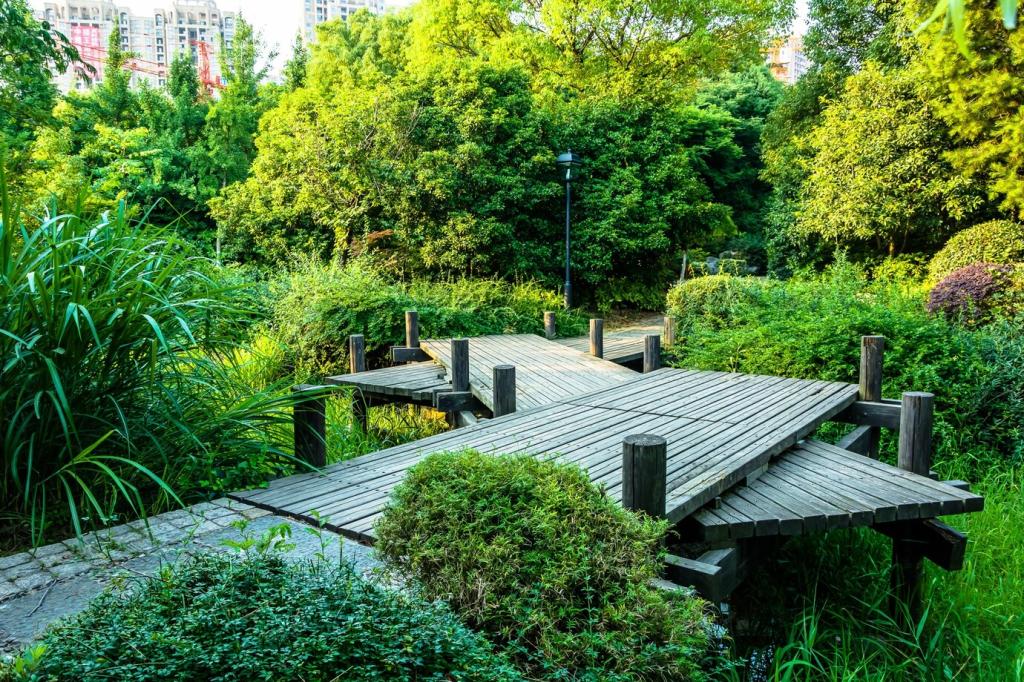Creating a beautiful garden does not have to come at the expense of the environment. Sustainable landscaping integrates natural processes, resource conservation, and thoughtful planning to foster vibrant outdoor spaces that coexist harmoniously with the surrounding ecosystem. By embracing eco-friendly practices, gardeners can minimize their environmental footprint, conserve resources, and encourage biodiversity, all while enjoying a flourishing, resilient garden.
Understanding Sustainable Landscaping
At the core of sustainable landscaping are principles that prioritize conserving water, nurturing soil health, and selecting plants suited to the local climate. These guidelines ensure your garden thrives with less input while reducing negative impacts. Sustainability also emphasizes waste reduction, using materials wisely, and planning gardens that require minimal chemical intervention, leading to healthier environments for both people and wildlife.

Water Conservation Strategies
Efficient Irrigation Techniques
Switching from traditional irrigation to efficient systems—such as drip lines or soaker hoses—can drastically reduce water waste. Smart irrigation controllers adjust watering schedules based on actual weather conditions, ensuring plants receive just what they need, when they need it. Placing mulch around plants helps retain soil moisture, further reducing the frequency and amount of irrigation required, all while curbing weed growth.
Rainwater Harvesting in the Garden
Capturing rainwater is an ingenious way to conserve. By installing barrels or cisterns, gardeners can store runoff from roofs to water their plants later. This method not only reduces reliance on municipal water but also helps mitigate stormwater runoff, preventing erosion and pollution. Additionally, using rainwater typically provides healthier hydration for plants, as it is free from many chemicals found in tap water.
Creating Drought-Resistant Landscapes
Choosing plants attuned to local conditions—particularly those adapted to periodic droughts—reduces the need for supplemental watering. These plants often feature deep root systems or leaves that minimize water loss, thriving in dry spells without constant attention. By grouping plants with similar water requirements, gardeners can further streamline irrigation, making every drop count in maintaining a lush and beautiful outdoor environment.
Soil Health and Organic Techniques
Composting and Organic Matter
Incorporating compost into the garden recycles kitchen scraps and yard waste into rich, nourishing organic matter. This natural fertilizer encourages beneficial microbial activity, improves soil structure, and boosts the garden’s ability to retain water. Regularly adding compost reduces the need for chemical fertilizers, resulting in healthier, more productive plants and a balanced soil ecosystem.

The Importance of Native Plants
Native plants are uniquely adapted to the local climate and soil, requiring less water and maintenance than non-native varieties. Their deep-rooted systems stabilize soil and prevent erosion, while also offering year-round beauty and interest. Most importantly, native flora creates a vital link in sustaining native fauna, ensuring the ecological chain remains robust and healthy.
Attracting Pollinators and Beneficial Insects
Designing a garden with a diverse range of flowering plants helps attract bees, butterflies, and other essential pollinators. Including plants with staggered bloom times ensures a continuous supply of food throughout the growing season. Welcoming beneficial insects like ladybugs and lacewings provides natural pest control, reducing the need for chemical interventions and supporting balanced, thriving ecosystems.
Reducing Lawn Areas and Alternative Groundcovers
Traditional lawns often require frequent mowing, watering, and chemical inputs. By reducing their size or replacing sections with other plantings, gardeners free up space for native shrubs, wildflowers, or vegetable beds. Smaller lawns are easier to care for and diminish the garden’s carbon footprint, leading to a greener, more diverse outdoor living space.
Sustainable Materials and Garden Structures
Utilizing recycled or salvaged materials—such as reclaimed wood, bricks, or stone—reduces landfill waste and conserves resources. Sourcing locally also cuts down on transportation emissions. These choices give gardens unique character and authenticity, while actively supporting a circular economy. Integrating reused materials can spark creativity, resulting in both beautiful and sustainable structures.
Choosing permeable paving for walkways and patios helps reduce runoff and promote groundwater recharge. Alternatives like gravel, open pavers, or decomposed granite allow water to pass through, mitigating erosion and minimizing the “heat island” effect. These solutions not only perform better environmentally but also create inviting, useful spaces that blend seamlessly with natural plantings.
From insect hotels to pollinator-friendly fences, sustainable gardens benefit from structures designed with wildlife in mind. Trellises can support climbing native vines that shelter insects and birds. Small ponds or rain gardens attract amphibians and butterflies. By intentionally including such features, gardeners ensure their landscapes support their own enjoyment while meeting the needs of countless wild species.

Waste Reduction and Eco-Conscious Maintenance
Responsible Waste Management
Composting garden clippings and kitchen waste diverts debris from landfills, turning it into valuable soil builder. Reusing pruned branches as garden borders or mulch further maximizes resources. By minimizing what leaves the property and reusing what’s available on site, gardeners reduce their ecological impact and keep their landscapes closed-loop and efficient.
Organic Pest and Disease Control
Regular monitoring and preventive care can dramatically reduce pest issues. Instead of chemical sprays, sustainable gardeners encourage a balance of beneficial insects and use mechanical controls or organic remedies only when necessary. Healthy, diverse plantings are naturally less vulnerable to outbreaks, ensuring the garden flourishes with minimal intervention and without harming the broader environment.
Gentle Seasonal Maintenance
Choose manual tools over gas-powered alternatives to reduce pollution and noise. Letting some leaf litter remain in autumn provides habitat for insects and enriches the soil. When pruning or tidying, prioritize the health of the entire ecosystem, remembering that small gestures—like leaving seed heads for birds—have a significant positive impact in supporting life year-round.
Encouraging Community and Education
Sharing Knowledge and Inspiration
Hosting garden tours, workshops, or even casual conversations can inspire neighbors to adopt eco-friendly techniques. Sharing seeds, cuttings, and experiences helps create a supportive network focused on sustainability. When gardeners lead by example, their visible successes encourage others to follow suit, accelerating positive change throughout communities.
Engaging in Local Conservation Efforts
Connecting with local conservation projects—such as habitat restoration or pollinator pathway initiatives—multiplies the impact of individual efforts. Volunteering or collaborating with environmental groups deepens understanding of native ecosystems and helps expand green corridors. This engagement not only benefits the broader landscape but also forges strong community bonds centered around common environmental goals.
Lifelong Learning in Sustainable Gardening
Sustainable landscaping is an evolving field, with new techniques and insights emerging regularly. Whether through books, online resources, or connections with local experts, continual learning ensures gardeners stay equipped to care for their land responsibly. Investing in education enriches personal practice and amplifies the positive impact on both the garden and the planet.
